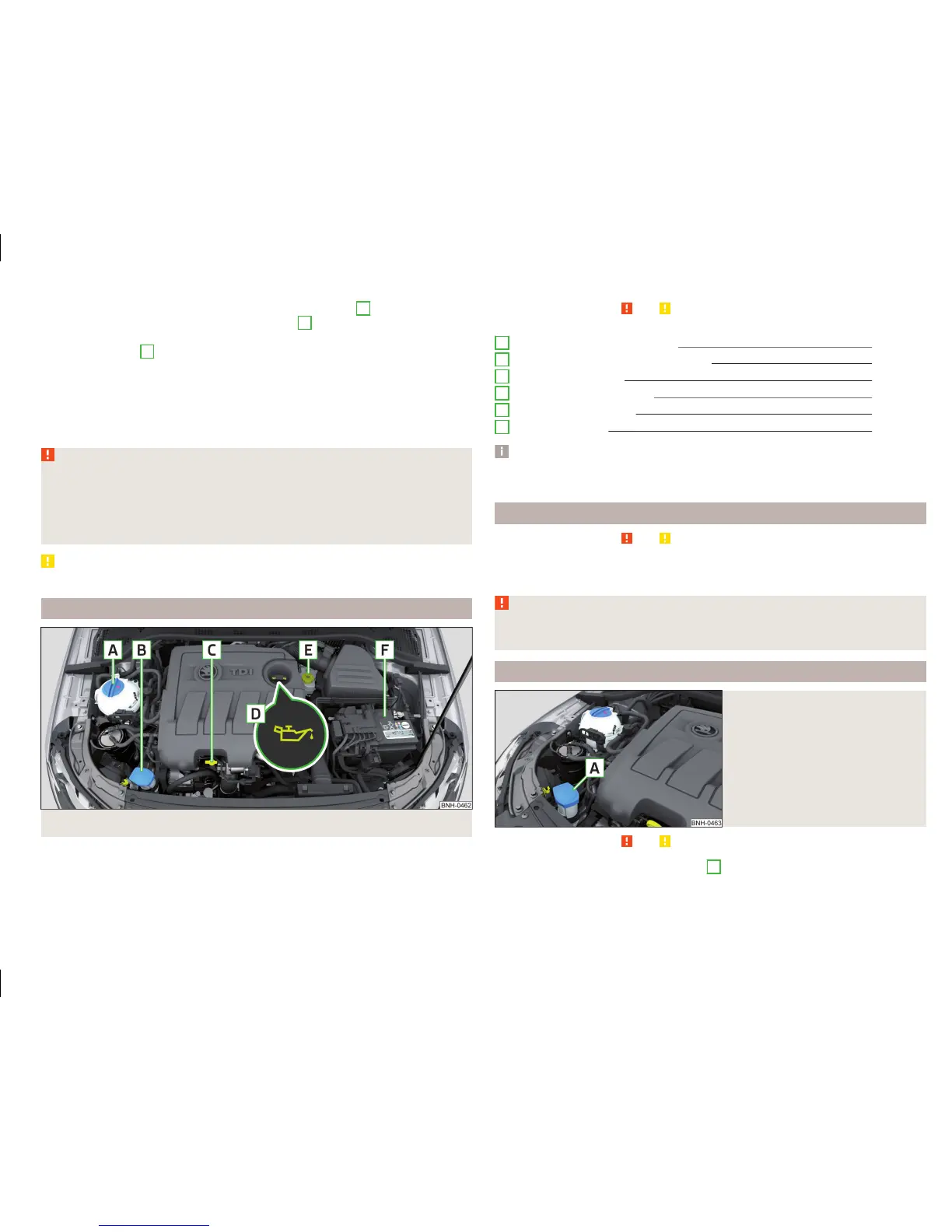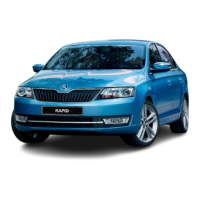›
Grasp the bonnet catch and lift in the direction of arrow
3
.
›
Remove the lid prop in the direction of arrow
4
from the holder.
›
Secure the open flap inserting the end of the post into the opening in the di-
rection of arrow
5
.
Close the flap
›
Lift the bonnet.
›
Decouple the bonnet support and press into the holder designed to hold it.
›
Let the bonnet drop into the lock carrier lock from a height of around 20 cm –
do not push it in!
WARNING
■
Check that the bonnet is closed properly.
■
If you notice that the lock is not properly engaged while driving, stop the
vehicle immediately and close the flap – risk of accident!
■
Make sure that when closing the bonnet, no body parts are crushed -
there is danger of injury!
CAUTION
Never open the bonnet by the locking lever » Fig. 125.
Engine compartment overview
Fig. 126 Principle sketch: Engine compartment
Read and observe and on page 141 first.
Arrangement in the engine compartment » Fig. 126
Coolant expansion reservoir 147
Windscreen washer fluid reservoir 143
Engine oil dipstick 145
Engine oil filler opening 146
Brake fluid reservoir 148
Vehicle battery 148
Note
The location of the inspection points in the engine compartment of petrol and
diesel engines is practically identical.
Radiator fan
Read and observe and on page 141 first.
The radiator fan is powered by an electric motor. Operation is controlled ac-
cording to the temperature of the coolant.
WARNING
After switching off the ignition, the fan may intermittently continue to op-
erate for approx. 10 minutes.
Windscreen washer system
Fig. 127
Windscreen washer fluid reser-
voir
Read and observe and on page 141 first.
The windscreen washer fluid reservoir
A
is located in the engine compart-
ment » Fig. 127.
A
B
C
D
E
F
143
Inspecting and replenishing

